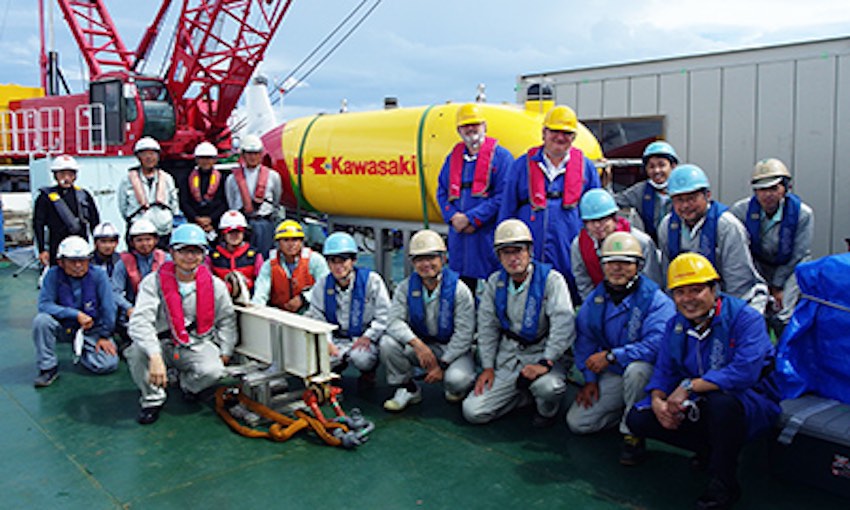KAWASAKI Heavy Industries and TotalEnergies have trialled the use of an autonomous underwater vehicle to inspect subsea pipelines.
The offshore verification test involved measuring the electrical potential of subsea pipelines off Japan’s Awaji Island.
Kawasaki Heavy Industries, which developed the AUV, said the test was successful.
The AUV is the first of its kind with a robot arm for subsea pipeline inspections. Kawasaki developed it in response to growing demand for subsea pipeline maintenance in offshore oil and gas fields.
The AUV is known as a Subsea Precise Inspector with Close Eyes – SPICE for short.
Kawasaki tested the AUV as part of a research project proposed by TotalEnergies.
The project involved integrating TotalEnergies’ electrical potential measurement technology LTCP with SPICE to enable AUV to measure the electrical potential gradient of a pipeline.
Noriyuki Okaya, manager of development & design section, AUV department, ship & offshore structure business division at Kawasaki, said his team was pleased to participate in the trial with TotalEnergies.
“In this sea trial, we could obtain useful inspection data in combination with LTCP and also could demonstrate the ability of SPICE as a pipeline proximity inspection platform, continuing from 2020,” he said.
“We will continue to develop it in search of further possibilities.”
Andy Gower of TotalEnergies’ Stavenger Research Centre said SPICE enabled the LTCP technology to demonstrate the performance could be repeated.
“The potential for additional sensors to be deployed at the same time, should enable other non-destructive test sensors and techniques, providing enhanced data of aging pipeline and allowing integrity threats to be assessed with more detail.
“The future trend of subsea robotics is for highly manoeuvrable sensor platforms, and the performance of LTCP integrated with SPICE, provides an effective solution to determine the performance of the cathodic protection system in an operational context.”

